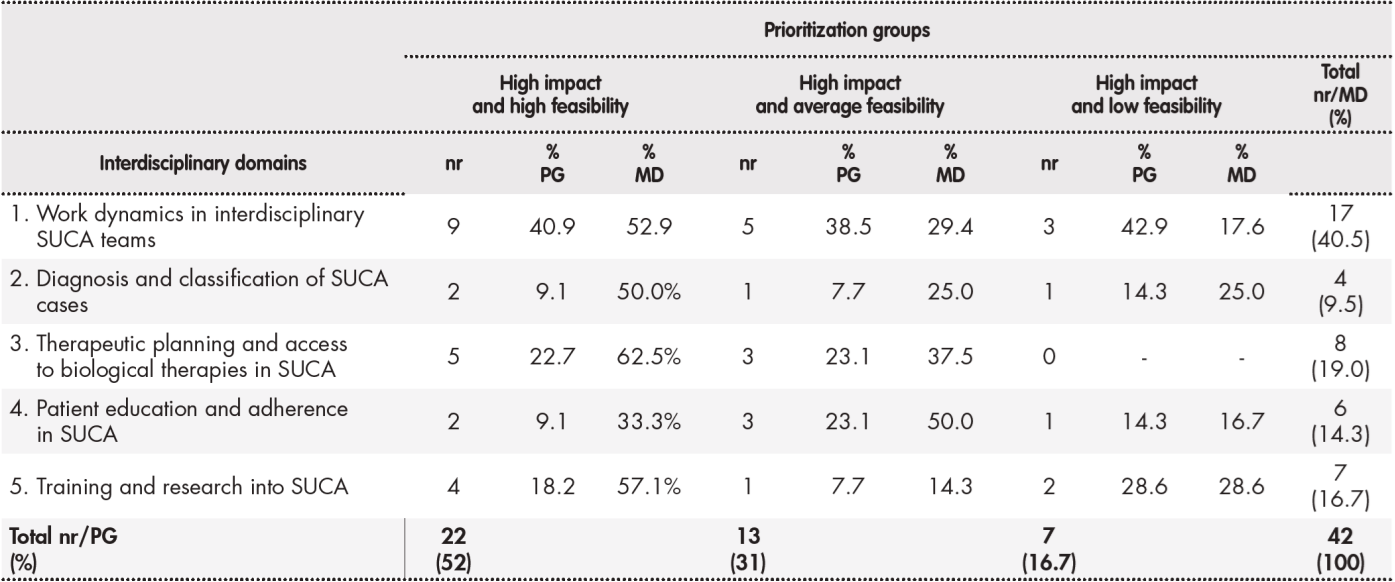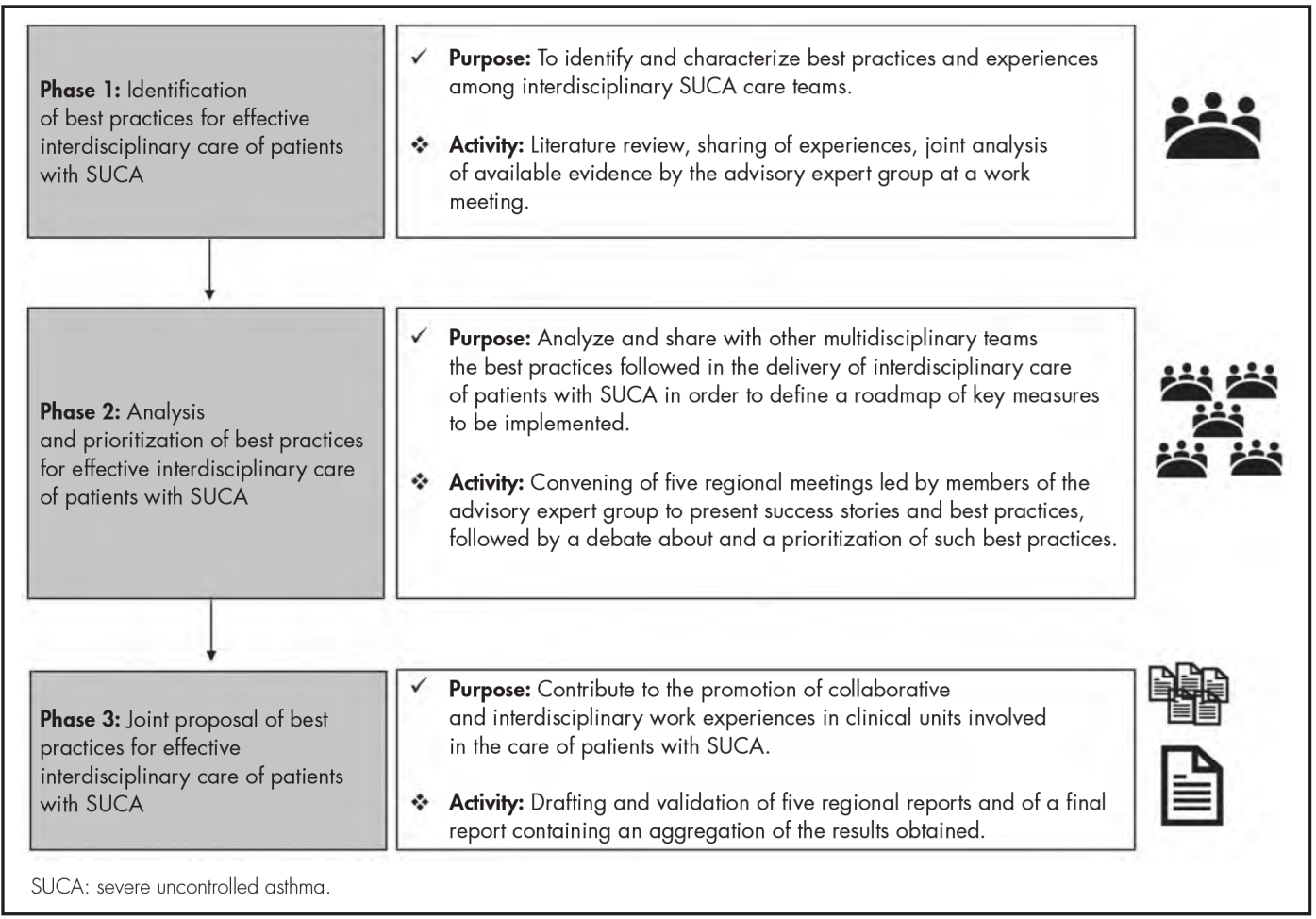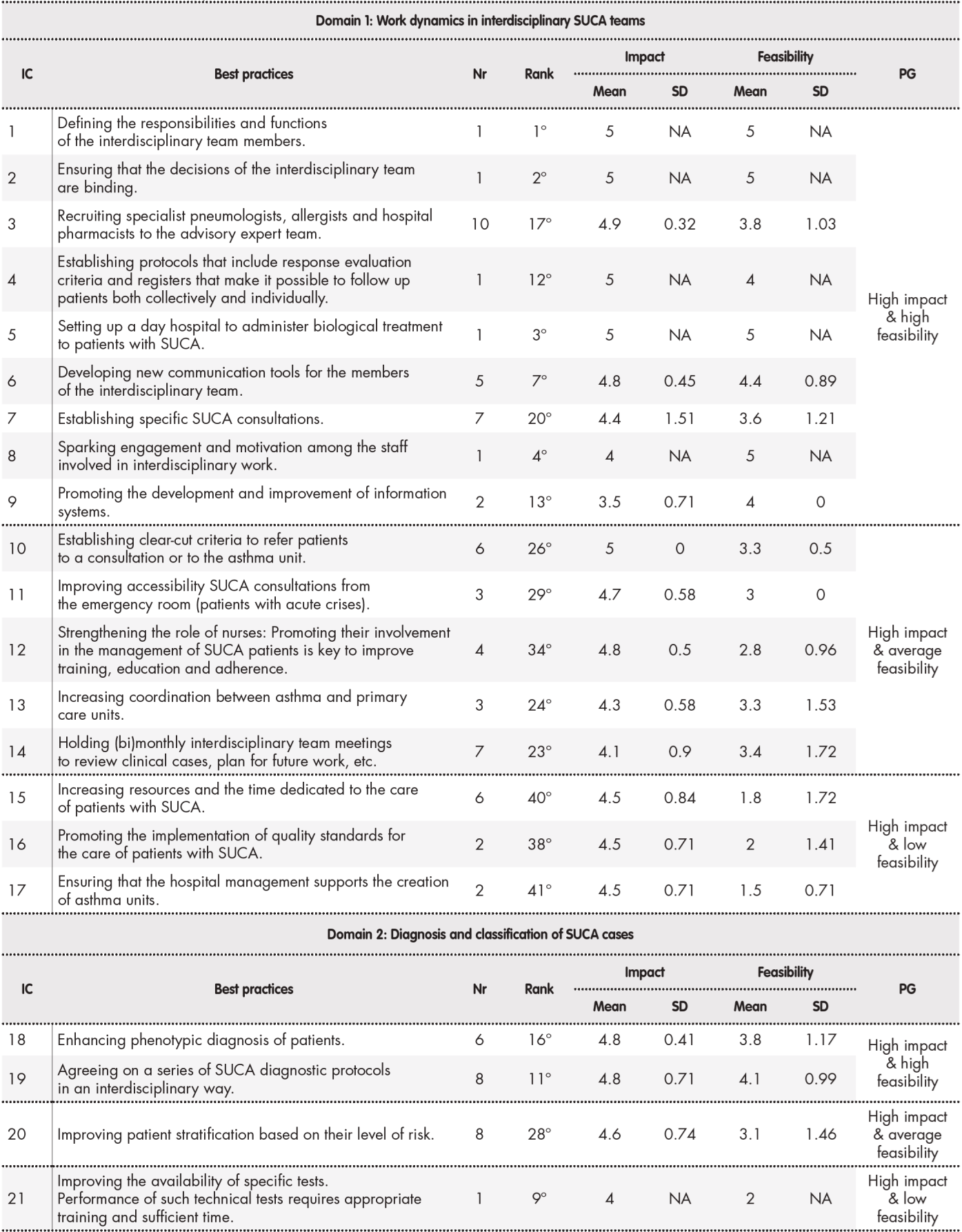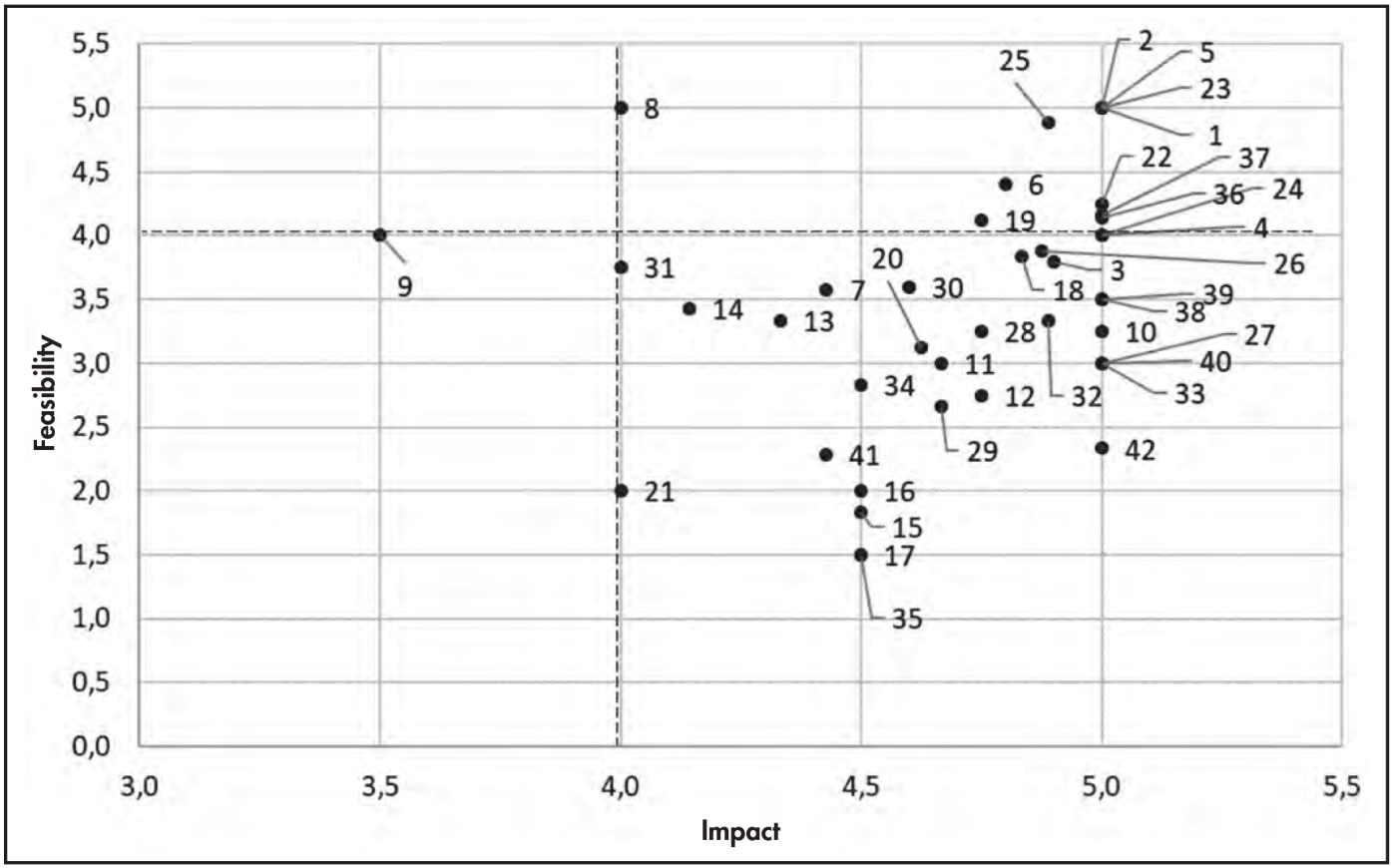Introduction
As one of the most prevalent chronic respiratory conditions, asthma imposes a heavy burden on patients’ health and economic well-being. Patients with severe uncontrolled asthma (SUCA)1, who account for a small proportion (3.9%) of all asthmatic patients2, have been reported to display poorer quality of life and greater productivity losses, and to consume larger amounts of healthcare resources3-10. Lack of control of these patients may be attributable to poor response to medical treatment or to causes unrelated to the disease (low adherence, presence of comorbidities, aggravating factors and exposure to asthma triggers)1. Against this backdrop, several studies have highlighted SUCA’s socioeconomic and healthcare impact5-10, pointing to the need to establish effective strategies for appropriately controlling asthma in patients suffering from the condition11,12.
Poor control of asthmatic episodes, together with the paradigm shift undergone by chronic patient care models, the advent of personalized medicine, the concern with reducing variability in clinical practice, and the introduction of evidence-based medicine invite reflection on what care model is best suited to patients with SUCA3. The Spanish National Health Service has introduced changes in its care models to better manage the burden of chronic disease, thereby promoting a more patient-centered, predictable, integrated, proactive, participative and interdisciplinary kind of medicine3.
Against this background, appropriate management of SUCA requires an optimization of the different levels of care and the promotion of an interdisciplinary approach, with a view to implementing a truly integrated model aimed at adapting the care provided to patients, making it more personalized and adjusting it more closely to their needs13. Scientific societies are currently working on the creation of interdisciplinary working groups and committees, whose functions include establishing an accurate Díagnosis of asthma, coming up with therapeutic strategies adapted to each patient’s needs, planning for and conducting appropriate follow-up and outcome evaluations, and promoting joint training and research14,15. Healthcare providers, on their part, support optimization of the management of SUCA by holding debates; drawing up interdisciplinary consensus documents; and publishing papers on the effective management of asthma(10.16), referral criteria17, Díagnostic tests18, and cost-effectiveness measures4.
Although these interdisciplinary working groups were typically made up of experts in allergies and pneumology, the development of biologic therapies for the treatment of severe asthma heralded a new era in which the role of specialist hospital pharmacists in interdisciplinary asthma working groups and committees has been increasingly important19. The involvement and vision of these professionals has been essential for optimizing, monitoring and following up on the use of targeted therapies; for better controlling therapeutic adherence; and for educating patients about the importance of compliance. Existing experiences show that the involvement of specialist hospital pharmacists in these interdisciplinary teams contributes to reducing the potential complications of pharmacological treatments, allows a more efficient monitoring of health outcomes, decreases the amount of medicines administered unnecessarily, minimizes hospital admissions, and diminishes the cost of treatment20.
The incorporation of specialist hospital pharmacists to the interdisciplinary teams led to the inception of the TEAM project in 2019. TEAM is the Spanish acronym for Trabajo en Equipos de Asma Multidisciplinares (interdisciplinary work in asthma care teams). The project was conceived with the following goals: 1) identify and characterize best practices and work experiences in interdisciplinary teams dedicated to SUCA; 2) share and compare best practices in SUCA care with other interdisciplinary teams in order to define a roadmap with key actions to be implemented; and contribute to promoting collaborative interdisciplinary work experiences among clinical teams dedicated to SUCA care.
Methods
In order to provide the guidance required and ensure correct execution of the three phases the project was divided into (Figure 1), an advisory expert group was established made up of five interdisciplinary teams, each of them comprising a specialist hospital pharmacist and at least one specialist pneumologist or allergist from a hospital with experience in the management of SUCA. The advisory expert group was consequently made up of 13 professionals (6 specialist hospital pharmacists, 5 specialist pneumologists and 2 specialist allergists) from five different autonomous regions (Andalusia, Catalonia, Madrid, Galicia and Valencia).
Phase 1: Identification of best practices
A literature review was carried out using the following search terms: "severe uncontrolled asthma," "interdisciplinary team," and "hospital pharmacy." Each expert team provided a thorough description of the interdisciplinary care model implemented in their hospital and shared their views on the best practices presented by fellow group members, as well as on any barriers to their implementation by their hospital or any improvements that could be made to them. Best practices were compiled and distributed into five domains across all three phases of the project: 1) Work dynamics in interdisciplinary SUCA teams. 2) Díagnosis and classification of SUCA cases. 3) Therapeutic planning and access to biologic therapies in SUCA. 4) Patient education and adherence to treatment in SUCA. 5) Training and research into SUCA.
Phase 2: Best practice analysis and prioritization
Five regional meetings were convened from May to September 2019, led by the work teams in the advisory expert group. Participants included specialist hospital pharmacists, specialist allergists and specialist pneumologists from different hospitals. Meetings were structured into three sections:
1) Presentation of the best practices, barriers and areas of improvement (identified in phase 1). 2) Analysis and prioritization of best practices. 3) Evaluation of the current status of interdisciplinary work in SUCA. Work groups were made up of 6-10 members, which each group being asked to prioritize the initiatives identified in terms of their potential impact and feasibility.
The impact of a best practice was defined as the potential effect the said best practice could have on improving the quality of the care provided to patients with SUCA and boosting their health outcomes. Feasibility was defined as the possibility to implement a given best practice as a function of the existence of potential barriers to its implementation at different levels (organizational, cultural, or procedural) and the amount of resources required for its execution (financial, human and related to the coordination between different levels/structures). The potential impact and feasibility of each best practice were rated on a scale from 1 to 5, where 1 denoted very low impact/feasibility and 5 very high impact/feasibility). Finally, a compilation was made of the scores assigned by the different groups and of the contributions made by the participants.
The participants’ opinions on the current status of interdisciplinary work in SUCA were collected via an online televoting system (Mentimeter)21. The questions asked were as follows: 1) In what way do you think that interdisciplinary work would improve the management of SUCA patients? 2) Is interdisciplinary collaborative work on SUCA cases standard practice in your hospital; 3) what areas of clinical practice do you think require further consolidation and development?
Phase 3: Best practice proposals
All best practices identified in the course of the five regional meetings were integrated into a single template and a mean impact and feasibility score was calculated for each of them. Best practices were classified into three groups according to their potential impact and feasibility.
High impact and feasibility (mean score ≥ 3.5 for both impact and feasibility).
Low impact and average feasibility (mean impact score ≥ 3.5; mean feasibility score: 2.5-3.5).
High impact and low feasibility (mean impact score ≥ 3.5; mean feasibility score ≤ 2.5).
Best practices assigned a mean score > 4 in terms of impact and feasibility were defined as high-priority implementation practices.
Results
Phase 1 comprised a pre-identification of 26 interdisciplinary best practices across the five domains described above, based on a literature review and on the contributions of the expert group.
In phase 2, a total of 95 health care providers (44% of them specialist hospital pharmacists, 31% specialist pneumologists and 25% specialist allergists) from 48 hospitals in five autonomous regions worked together to extend the initial list of best practices to 42 different initiatives related to the interdisciplinary care of patients with SUCA. Over half of these best practices (52%) fell into the high impact/high feasibility category. Seven of the initiatives identified (16.7%) belonged to the high impact/low feasibility category. Table 1, Table 1 cont provides the full list of best practices, together with their distribution into the different domains and the mean score assigned to each of them in terms of their impact and feasibility.
Table 1 (cont.). Prioritization of best practices across the different domains considered

IC: identification code of each best practice; Mean: arithmetic mean; NA: not applicable; Nr: number of responses; PG: prioritization group; Rank: position on the SUCA best practice prioritization ranking; SD: standard deviation; SUCA: severe uncontrolled asthma.
Most best practices (40.9%) regarded as high impact/high feasibility corresponded to the work dynamics in interdisciplinary SUCA teams domain. It must be noted that none of the best practices in the therapeutic planning and access to biological therapies in SUCA domain was considered low feasibility; initiatives in this area were considered both necessary and easily implementable with the collaboration of hospital pharmacy units. Table 2 shows the prioritization of best practices across different areas, as a function of their potential impact and feasibility.
Table 2. Overview of the results obtained from the identification and prioritization of best practices following interdisciplinary work in severe uncontrolled asthma (by interdisciplinary domains and prioritization group)

Prioritization groups: best practices were classified into three prioritization groups depending on the aggregate scores obtained by each of them in terms of potential impact and feasibility. Best practices with high impact & high feasibility: mean score ≥ 3.5 for both impact and feasibility. Best practices with high impact & average feasibility: mean score ≥ 3.5 for impact and 2.5-3.5 for feasibility. Best practices with high impact & low feasibility: mean score ≥ 3.5 for impact and ≤ 2.5 for feasibility.
MD: interdisciplinary domain; % MD: percentage of best practices over the total of best practices identified in the same interdisciplinary domain; nr: number of best practices identified; PG: prioritization groups; % PG: percentage of best practices over the total of best practices identified in the same prioritization group; Total nr/MD (%): total nr of best practices in each interdisciplinary domain and percentage of best practices in each domain based on the total of best practices identified; Total nr/PG (%): total nr of best practices in each prioritization group and percentage of best practices in each prioritization group based on the total of best practices identified.
Figure 2 presents a prioritization matrix of the best practices assigned the highest scores in terms of their potential impact and feasibility, and which were included in the roadmap of actions to be implemented as a matter of priority given that, in the opinion of the professionals participating in the initiative, they would be of great assistance to the interdisciplinary teams treating patients with SUCA.
Discussion
According to several interdisciplinary consensus reports10,16,22) and the accreditation standards for SUCA units developed by the main scientific societies in the field14,15, implementation of an interdisciplinary approach to the management of patients with SUCA, involving treatment by professionals from different areas working in a collaborative and coordinated way to provide patients with more personalized care, is considered one of the key elements required to ensure a more effective control of the disease13. Although the experience of hospital pharmacists in optimizing the treatment and follow-up of patients with complex chronic conditions amenable to be treated with biologic drugs is highly valued by the increasing number of interdisciplinary teams active in our country19,20, actual examples of hospital pharmacists becoming integrated into the teams treating patients with SUCA are as yet few and far between. For that reason, the project presented in this paper has acted as a meeting point and a forum for exchanging experiences between teams interested in this question. Indeed, it has allowed practitioners from different areas to prioritize the actions required to further consolidate the existing interdisciplinary collaborative models applied to the management of patients with SUCA.
As regards the dynamics of teamwork, participants highlighted the importance of defining the roles and responsibilities of each member of the interdisciplinary team, made up by specialist hospital pharmacists, pneumologists and allergists, as well as nursing staff, in line with the recommendations of the existing literature on the organization of specific SUCA consultations23. In consonance with previous reports, the highest-priority actions included the establishment of practical and accessible communication channels, integrated into the ordinary procedures of the different clinical units, to facilitate interdisciplinary collaboration and understanding13,23. They also comprised the development of specific referral criteria and closer coordination between asthma units and other departments(13.17).
The involvement of interdisciplinary teams in the Díagnosis and stratification of patients with SUCA, combined with patient education and adherence promotion are considered necessary, high-impact and easy-to-implement strategies to improve management of patients with SUCA. In line with the recommendations of the world’s leading asthma management guidelines1, working in an interdisciplinary way to improve the efficacy of phenotypic Díagnosis and risk stratification was considered a high-impact endeavor as it makes it possible to meet patients’ clinical and pharmacotherapeutic needs in a coordinated and efficient manner. Initiatives such as the Spanish Society of Hospital Pharmacists’ Strategic Pharmaceutical Outpatient Care Map (MAPEX project)24, which covers different diseases25,26, were hailed as efficient tools to improve the care provided to patients with SUCA.
As regards treatment planning and access to biologic therapies by patients with SUCA, instituting specific hospital pharmacy consultations that include dispensing of biologic medications and delivery of pharmaceutical care to patients with SUCA was considered an opportunity to improve pharmacotherapeutic follow-up27,28. According to the experts in the advisory group and to the existing literature20, these initiatives could include keeping a record of the medication dispensed; monitoring adverse reactions and drug-to-drug interactions; improving the quality of the information delivered to patients; promoting and evaluating adherence; and, above all, assessing health outcomes, with a view to ensuring that the individual therapeutic targets defined by the interdisciplinary team in consultation with the patient can be achieved. Considering the negative past experiences reported by authors working on other conditions25,26, best practices in this realm were given top priority because of their high impact and high (or average) feasibility. Nonetheless, there was broad agreement on the importance of embracing an interdisciplinary approach to the evaluation and adoption of therapeutic alternatives29, particularly regarding biologic treatments, through the promotion of contrastive evaluation reports. Moreover, participants underscored the need to encourage participation of hospital pharmacists in the design of therapeutic protocols for SUCA, and in the decision-making process at interdisciplinary asthma working groups with respect to treatment, follow-up and outcome evaluation. In this regard, the participation of interdisciplinary teams in the adoption of evaluation criteria with respect to clinical response and patient-reported outcomes (quality of life, symptoms, preferences, etc.) was considered to be an area for further investigation30-32. Although less of a priority, most best practices related to training and research were considered highly feasible. In this respect, different scientific societies have developed asthma training programs with an interdisciplinary approach33-37, as well as research projects30. Experts emphasized the need to keep delivering ongoing interdisciplinary training programs targeted to specialists and residents in hospital pharmacy, allergic diseases, pneumology, nursing as well as primary and emergency care.
The scarce evidence available on the impact and the outcomes of the best practices proposed, together with the impossibility to obtain them as part of the scope of this analysis was one of the main limitations of this study. It is therefore necessary to keep working on the design and publication of studies looking into the effects of implementing interdisciplinary programs in the context of SUCA care, including, in particular, clinical quality and patient-reported health outcome indicators.
In a nutshell, this study reflects the opinions of a group of over 95 hospital pharmacy, pneumology and allergic disease practitioners on the need and feasibility of implementing a series of actions conducive to driving interdisciplinary care in the context of SUCA by designing a roadmap of potential measures to be undertaken by a series of interdisciplinary working groups. Such measures must be adaptable to different environments and to practitioners with varying levels of experience.











 texto en
texto en 





